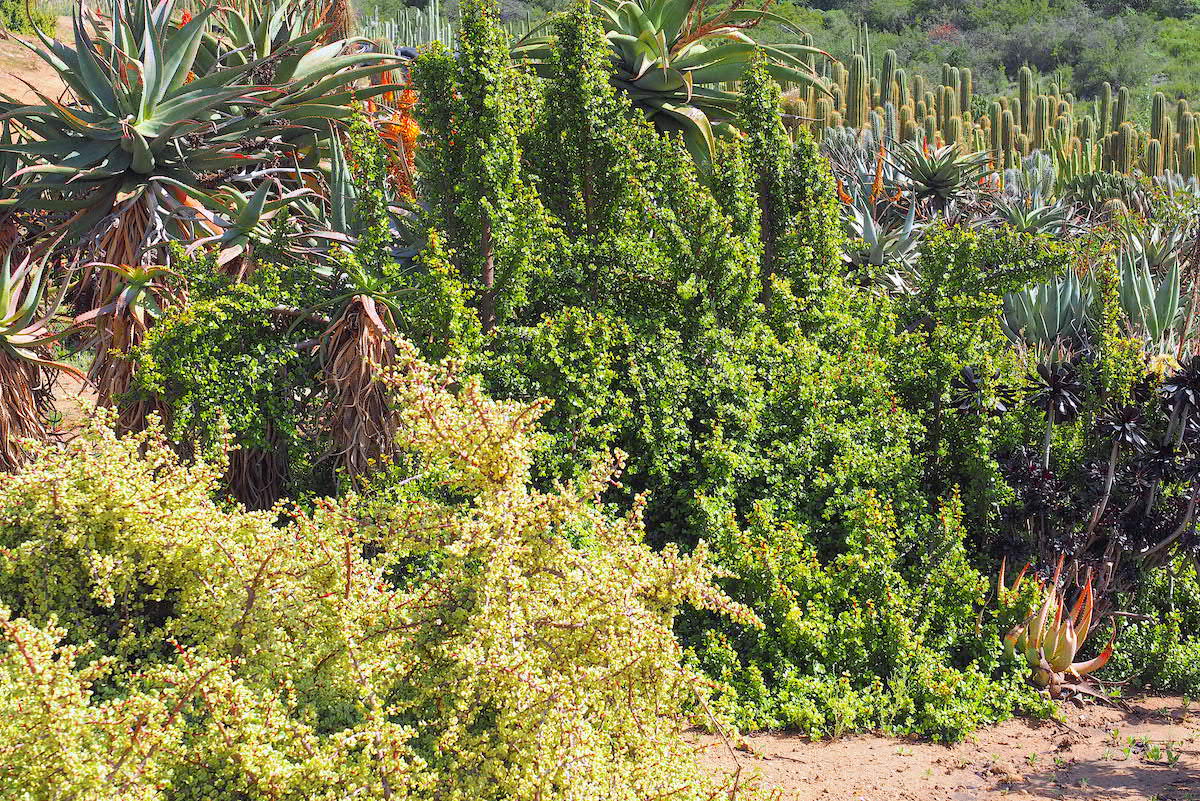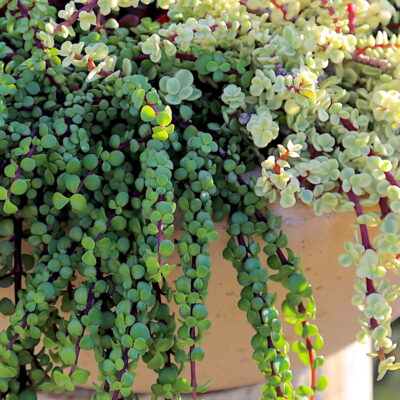
How Succulents Combat Global Warming
Here's another reason to feel good about growing succulents: You're helping to combat global warming.

Research indicates that succulents are highly efficient at scrubbing carbon dioxide from the atmosphere. It has to do with how they photosynthesize---the way they generate the energy necessary to grow.

Succulents metabolize carbon
No doubt you're aware that succulents store water in their leaves in order to survive in the dry, hot regions they come from. But what you may not know is that succulents avoid desiccation by opening their stomata only at night.
![]()
They then convert CO2 to a four-carbon organic acid used during the day for photosynthesis. The term for this is "crassulacean acid metabolism" (CAM). Scientists first observed it in---and named it after---the Crassulaceae family of succulents, which includes jades, aeoniums, echeverias, kalanchoes, cotyledons, sedum and sempervivums.
Succulents and global warming
"It's science. Saguaros are CO2-trapping machines," states an article about cacti and global warming in the Arizona Republic. It goes on to say that after a cactus dies, the carbon it contains---instead of going back into the atmosphere---"is transformed into an inorganic mineral that is sequestered for geologic time in the ground."
The shrub succulent Portulacaria afra (elephant's food) once covered 2-1/2 million acres of its native South Africa, but its population has shrunk significantly due to overgrazing by sheep and goats. There it's called spekboom, and the government intends to replant it so extensively that the thickets can be seen from space. Here's why...

Portulacaria afra in bloom
- NBC calls spekboom (Portulacaria afra, elephant's food) a "miracle plant."
- The BBC's Future Planet series says, "One tonne of CO2 can be captured for less than a tenth of the cost of sinking the equivalent carbon by planting trees in temperate or tropical forests."
- The newsletter of Smart Energy International: "One hectare of spekboom can reduce carbon emissions by 4 to 10 tonnes of carbon per year."
- South Africa's Spekboom Foundation says elephant's food "has enormous carbon-storing capabilities. Its capacity to offset harmful carbon emissions is 10 times more effective per hectare at carbon fixing than any tropical rainforest.”
- And a Cape Town publication enthuses: "This tree of wonder has the ability to absorb the highest amounts of carbon dioxide when compared to any other plant in existence."
South Africa is ON it
Portulacaria afra grows rapidly, with leaves that open their stomata not only at night but also---when conditions are favorable---during the day. All of the succulent's several varieties are mounding, easy-care landscape plants that start readily from cuttings.
Another movement in South Africa, the Spekboom Challenge, urges every citizen to plant ten. The Boplaas Family Vineyards in Calitzdorp, Western Cape, launched the challenge in Nov., 2019 by pledging to plant a million spekboom plants by 2025 to help fight climate change.
Closer to home, one of the best sources is Waterwise Botanicals nursery in Bonsall, between San Diego and Riverside. In addition to the common species, they have 'Minima; 'Variegata'; and an unusual, large-leaved cultivar 'Macrophylla'.
Consider: What if all of us who live where elephant's food, cacti and other CAM-efficient succulents will grow outdoors (Zones 9-11), were to plant them? What's your opinion...do you think we could make a difference?
P.S. When the famine comes...
Elephants eat spekboom and so can you. It's high in Vitamin C, but sour. In Make an Elephant's Food Salad, I use it as a garnish.
related info on this site
Portulacaria afra (Elephant Bush): Photos, Varieties, Cultivation, Uses
Portulacaria afra: Uses, Photos and Varieties Native to South Africa, elephant bush thrives outdoors in warm, sunny climates such as CA, Arizona, Florida and Hawaii See All Succulent Types Aeonium Agaves Aloes Cactus Crassula Echeveria Euphorbias Ice Plants Kalanchoe Portulacaria Senecio About Portulacaria afra Portulacaria afra (elephant’s food, elephant bush, spekboom) thrives in warm, sunny climates.…


Hi Debra,
Question: before I go crazy and plant cuttings of my 2 varieties of Portulacaria afra onto my steep slope, will they grow to be heavy water-laden carpet of plants to drag down the dirt on the slope like ice plants? I have seen that happen with an old friend, and it cost her a fortune to try to amend the slope that was slip, sliding away to the canyon below.
Hi Mary —
It shouldn’t be a problem. Portulacarias have much stronger, deeper roots than ice plants. At Waterwise Botanicals, they’re growing on a steep slope, but that’s in full sun and the soil is DG. Softer soil that’s stays damp might be problematical…certainly if it’s shallow…but that would be true regardless of what gets planted there. Even so, your friend might want to play it safe and plant one of the low-growing, mounding varieties.